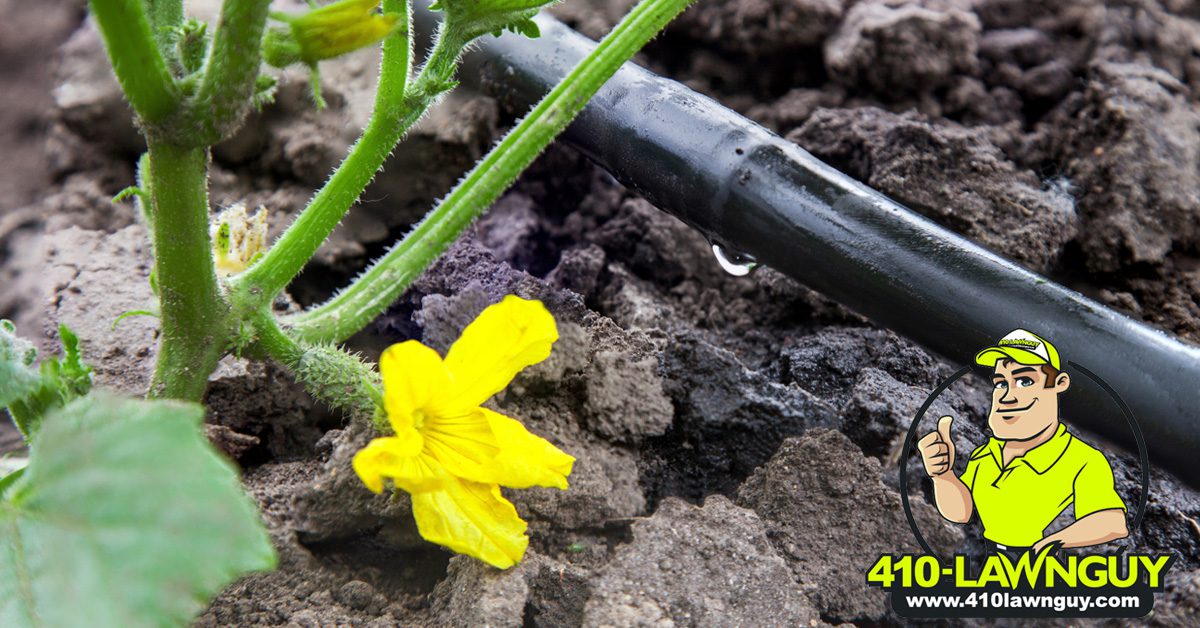 Drip irrigation is a watering system that works well in gardens. In contrast, a sprinkler system is better suited for lawns and large landscaped areas. Also called localized irrigation, micro-irrigation, or trickle irrigation, drip irrigation drips water at low rates through a plastic piping system. It focuses on the roots of each plant rather than the entire area.
Drip irrigation is a watering system that works well in gardens. In contrast, a sprinkler system is better suited for lawns and large landscaped areas. Also called localized irrigation, micro-irrigation, or trickle irrigation, drip irrigation drips water at low rates through a plastic piping system. It focuses on the roots of each plant rather than the entire area.
Is this system the way to go for your lawn and garden needs? Consider these pros and cons of drip irrigation before deciding.
Pros of Drip Irrigation
Water Conservation
With a drip irrigation system, water travels through pipes into drippers, called micro-sprinklers or emitters. The drippers release a slow trickle of water at the soil surface, allowing the water to absorb more effectively into the soil and the plants’ roots. You also lose much less water to evaporation and runoff. This system is highly effective at targeted garden watering. It can save up to 50% more water than using a sprinkler or other water method.
More Control
With this system, you can place pipes and drippers right where you want to water. Sprinkler systems don’t allow for targeted watering, instead watering the entire area the sprinkler reaches. While this is great if you’re trying to grow grass, it’s not the best choice when you want to focus on specific plants.
Weed Prevention
We don’t know anyone who enjoys pulling weeds or having them take over their garden or landscaping. With a drip irrigation system, you target specific plants to water, leaving the rest of the area dry. Without sufficient water, weeds won’t grow as well and be able to take root.
Better Growth
You’ll be providing consistent water at the plant’s roots, reducing muddy or dry areas that can remove valuable soil nutrients and contribute to poor growth. With a slow trickle of water, your plants can grow a healthy and robust root system. The result is an increased yield in vegetable gardens and further choking out weeds that could hide under the soil.
Less Disease
Over-watering or over-saturating the ground and plant foliage can lead to mildew, fungus, and rot. This can happen quickly with a sprinkler system. But with a drip irrigation system, the plants stay dry, and the moisture goes into the ground where it belongs.
Cons of Drip Irrigation
Money and Time Investment
Even though PVC is inexpensive, the cost of a drip irrigation system can easily run $100 or more once you get all the parts you need. It also takes time to get the system set up properly according to your garden plot. Once the season ends in Maryland, it’s time to take apart your drip irrigation system. You’ll store it for winter until you can bring it back out and start all over again in spring.
System Clogs
Over time, your drip irrigation system can get clogged with dirt, debris, mineral buildup, and algae. During the garden season, you should inspect the system periodically to make sure it’s not clogged. You should clean the system holes and heads as well, to prevent buildup. If you have poor water quality, using a water filter can help prevent system clogs.
If you are interested in installing a drip irrigation system for your prized flower and vegetable beds, contact us at 410 Lawn Guy. We’ll help you water efficiently, and you can watch your plants thrive!

